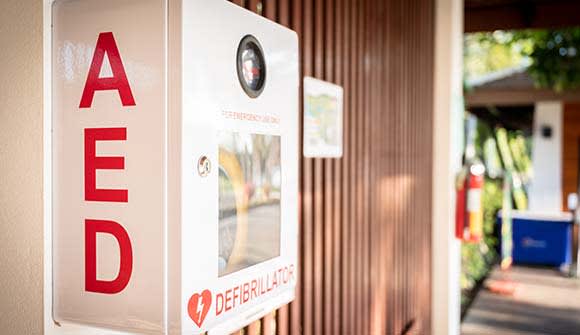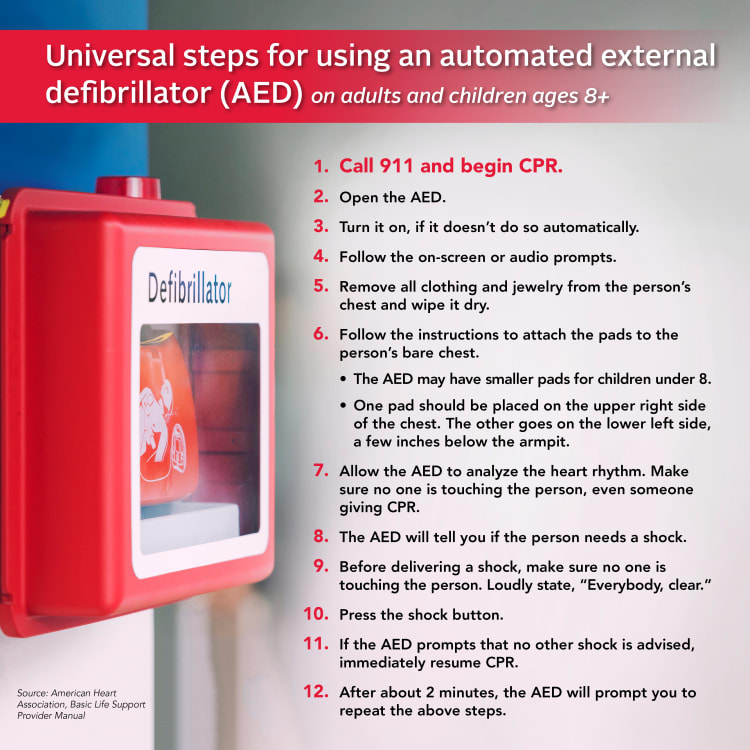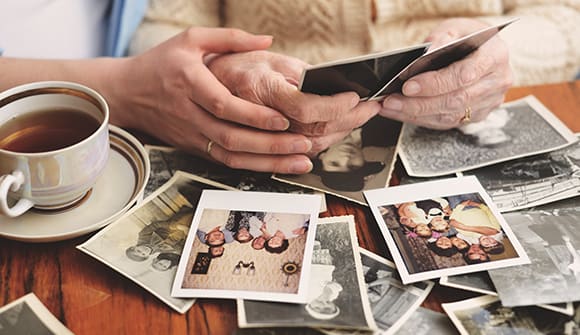Restart the heart
Do you know how to use an AED?
Article Author: Wesley Roberts
Article Date:

It often happens suddenly and without warning – a heart stops beating. Without blood being delivered to the brain, lungs and other vital organs, a person quickly loses consciousness and has no pulse.
Time is of the essence. A person’s chance of survival drops by 7-10% every minute a normal heartbeat isn’t restored.
When sudden cardiac arrest occurs, meaning an electrical malfunction causes an irregular heartbeat, automated external defibrillators (AEDs) are the only way to restore the heart’s rhythm. AEDs are life-saving devices that can be found in many public buildings.
Have you taken the time to spot one in your gym, grocery store, workplace or airport? Would you know what to do if a loved one experienced a cardiac emergency?
Keep beating
AEDs are lightweight, portable devices that deliver an electric shock through the chest to the heart. Each one has a built-in computer that checks a person’s heart rhythm to determine whether defibrillation is needed. In those cases, the AED prompts the rescuer to press the shock button, which stops the heart’s activity and gives it a chance to resume beating effectively.
“Most AEDs have audible prompts that will guide rescuers through the process,” explained Jessica Winberry, prevention coordinator with THE PLAYERS Center for Child Health at Wolfson Children’s Hospital. “AEDs will only advise a shock for ventricular fibrillation or pulseless ventricular tachycardia – two life-threatening conditions.”
Can I use an AED?
The short answer is yes. Non-medical personnel can safely use an AED.
“AEDs are designed to be user-friendly, and they are highly effective in detecting when a shock is actually needed,” explained Winberry. “That being said, you can really increase the chances of someone’s survival if you know the process of using an AED before you actually need one. People are scared they’re going to hurt someone, but even a small amount of training can help overcome this fear and save lives.”
How do I use an AED?
While these steps don’t take the place of formal AED training through a cardiopulmonary resuscitation (CPR) course, knowing what to do in an emergency is critical. When someone displays signs of cardiac arrest, including chest pain followed by collapsing, fainting, palpitations or shortness of breath, begin CPR and ask a bystander to call 911 immediately.
“CPR keeps oxygenated blood flowing to the brain and heart until the AED or an emergency medical team can restore a normal heartbeat,” said Winberry.
“We have the potential to save lives,” she added. “Knowing what to do in an emergency can mean the difference between life and death.”

The American Heart Association offers Heartsaver CPR AED trainings throughout the country. To find a location near you, click here. If you have questions about your heart health, Baptist Heart Specialists board-certified cardiologists are here to help. Call 904.720.0799 to request an appointment.



